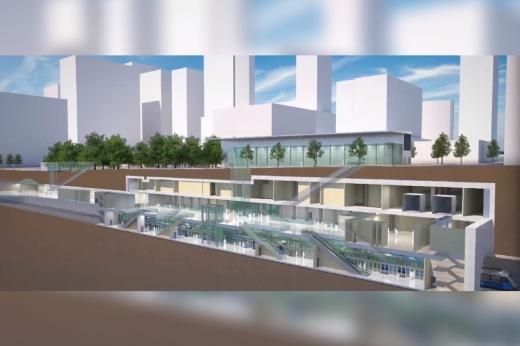While Project Connect's new rail lines will extend across Austin, the transit system will run below ground around downtown only. In that area, travelers will be able to access Orange and Blue line trains from six subway stations. Downtown's underground rail network was first unveiled last summer, and this month planners provided more detailed subway station outlines and several changes from the outline released a year ago.
During a June 22 public meeting, planners shared more information on the considerations they are making when laying out the new facilities. Project Connect's subway stations are being designed to be open to all travelers with a focus on wayfinding, passenger comfort and safety, and ease of use. Stations will be accessible via escalators, stairs and elevators—and some with ramps—and amenities such as public art, retail centers, informational video boards and more could also be included based on community input.
“What you don’t want is people spending more time underground than they need to," said Paulo Faria, an Austin Transit Partnership architect.
Faria also said stations will feature natural light shining through below ground, and that their entrances above ground will be "scaled" to match their surroundings while still standing out as access points.
Planners are also still deciding on the method through which stations and tunnels could be constructed. Options include mining via a tunnel boring system and the cut and cover method that would excavate specific pieces of the network before refilling them. Faria said those decisions will also play into how the stations are designed.
Government Center Station
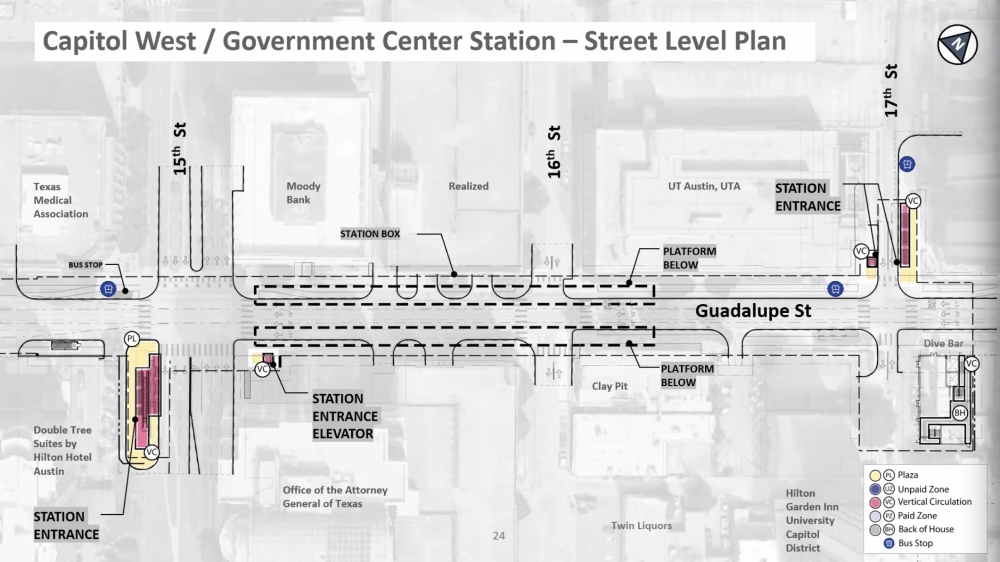

Republic Square Station
Project Connect's Blue and Orange lines will link at the Republic Square Station.
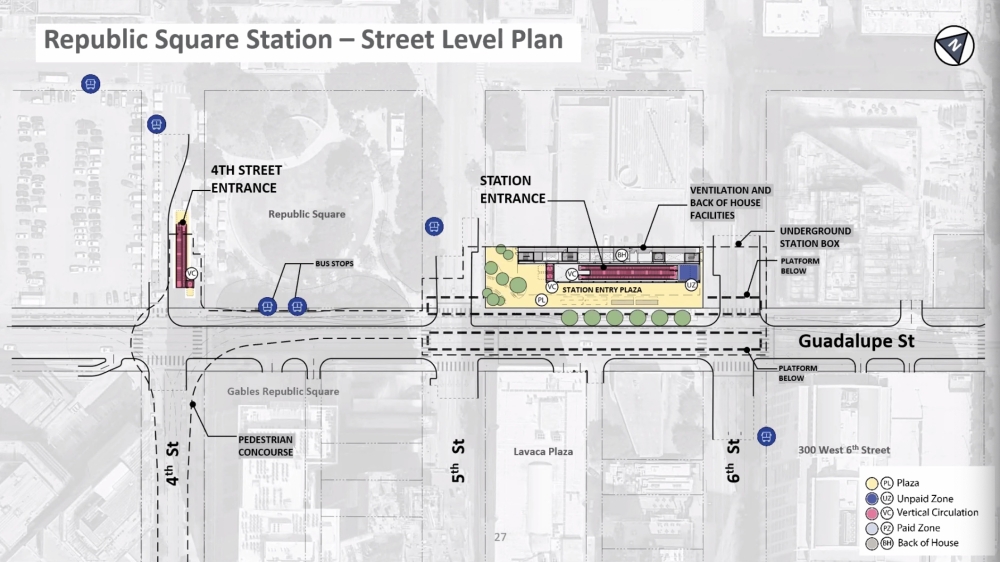
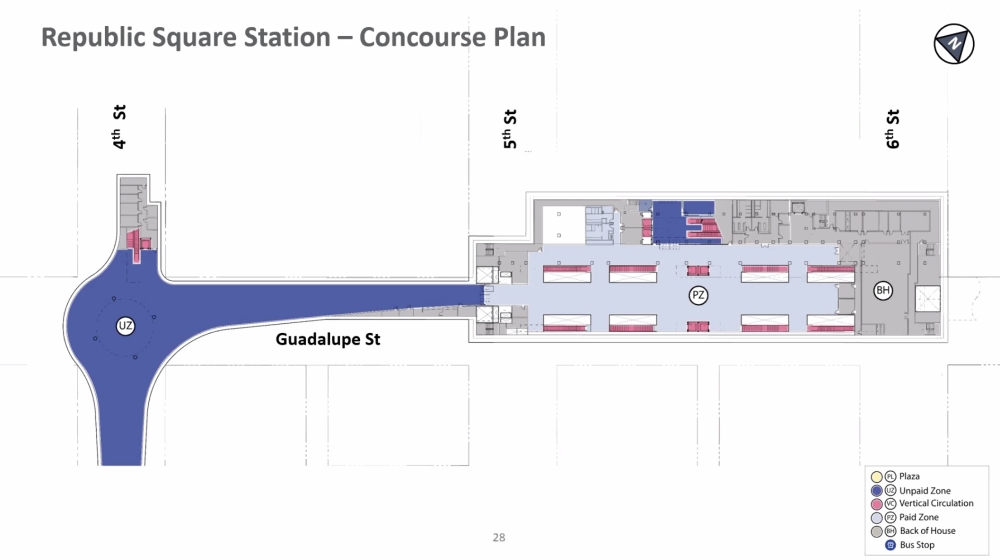
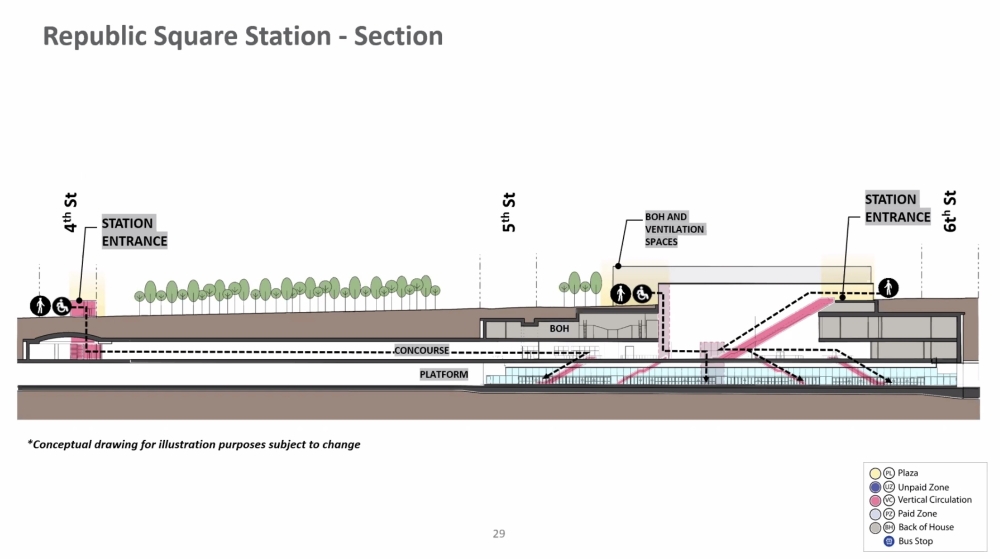
Auditorium Shores Station

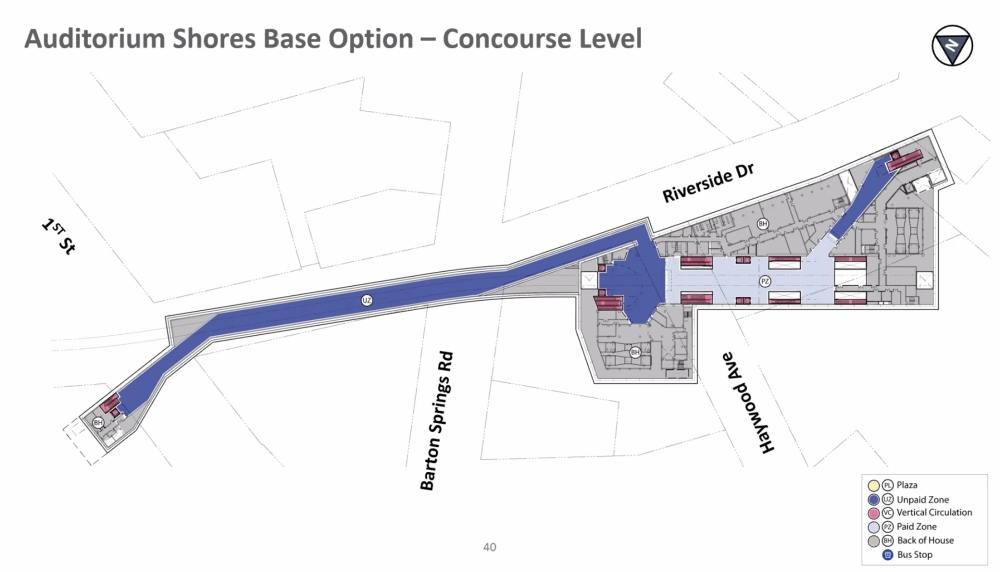
Planners said the subway station at Auditorium Shores is on one of the more "constrained" footprints on the rail network. An underground pedestrian walkway from The Long Center to the subway platform, which ATP design and architecture chief Peter Mullan said could cost upwards of $100 million, is one piece of the design that could be cut before construction.
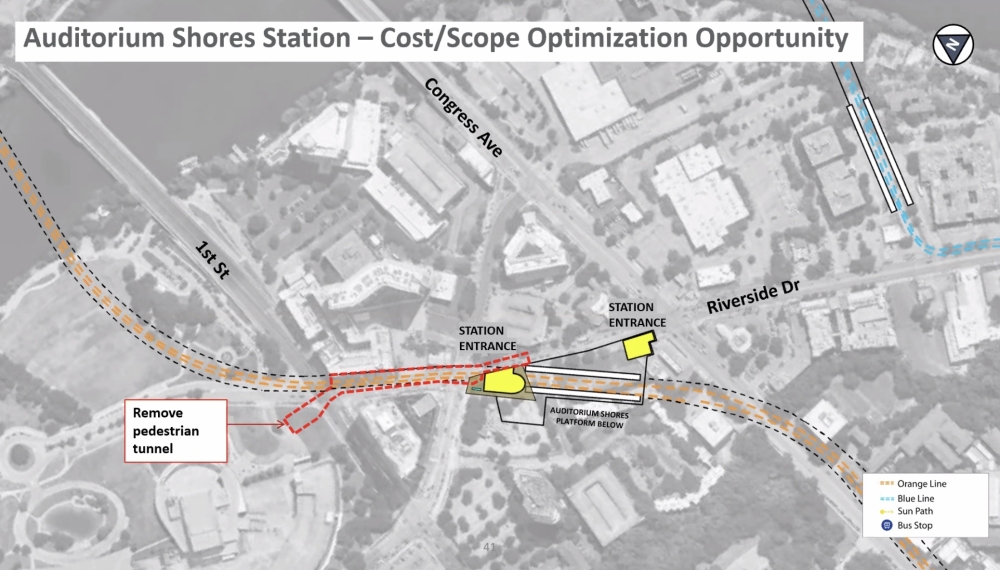
SoCo Station
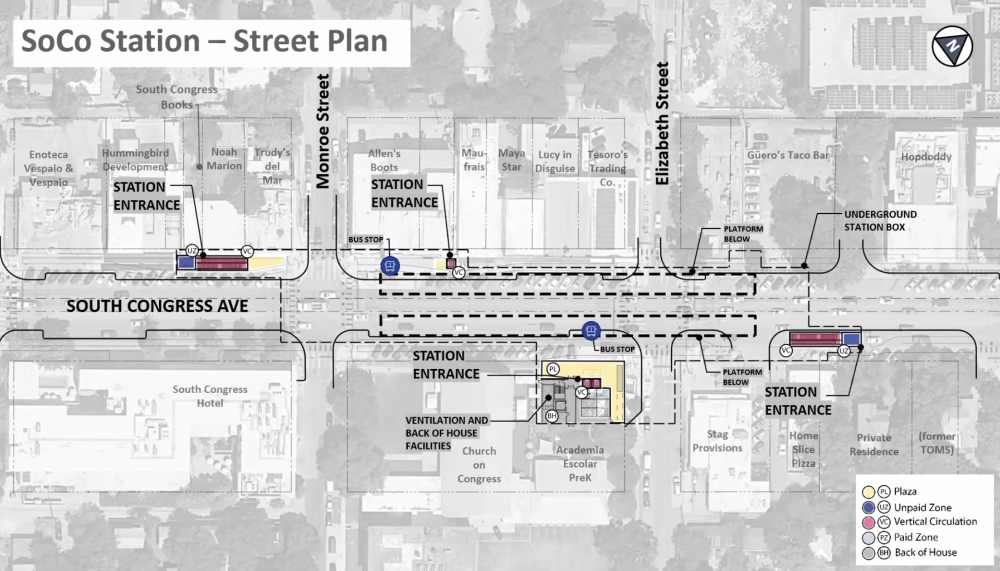
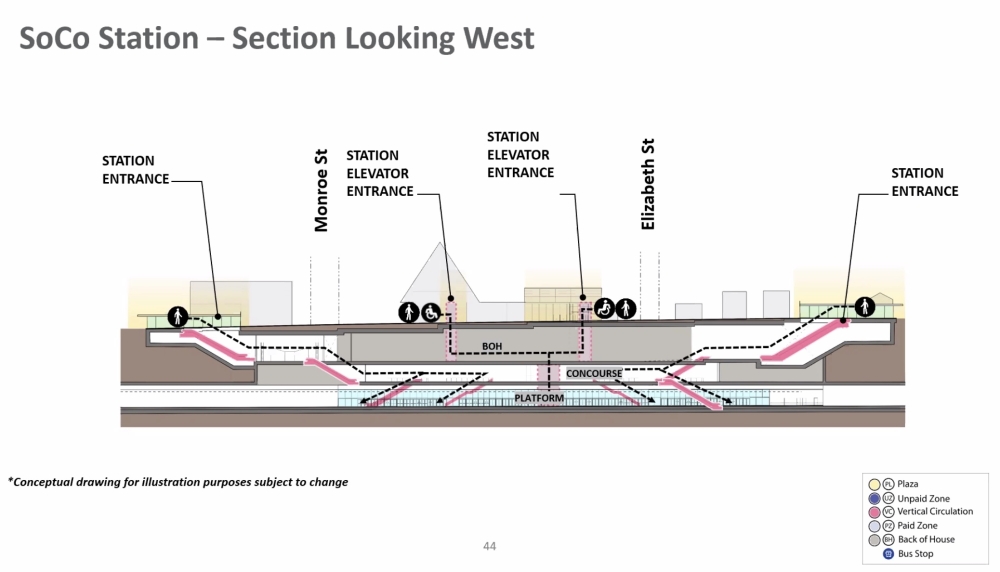
Congress Ave. Station
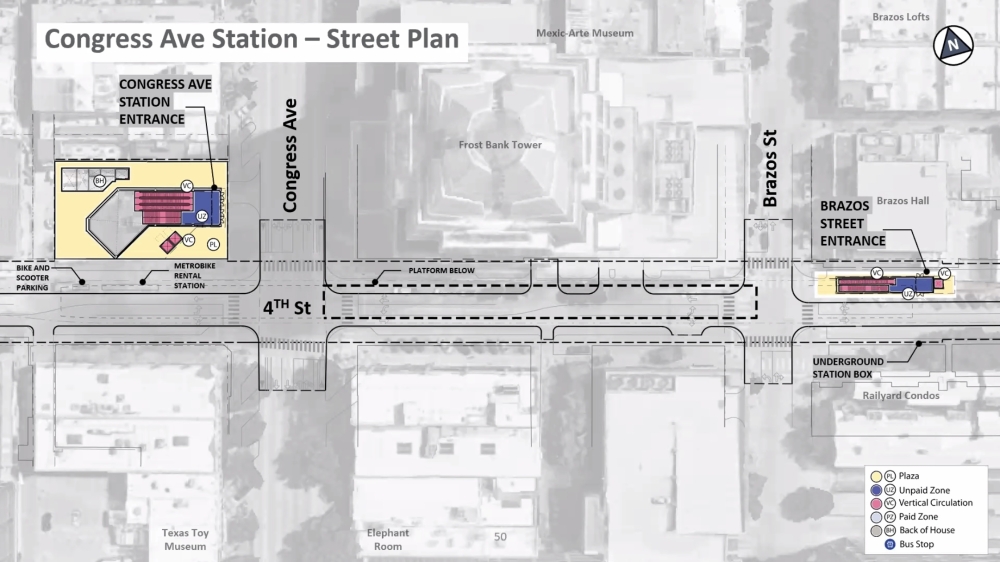
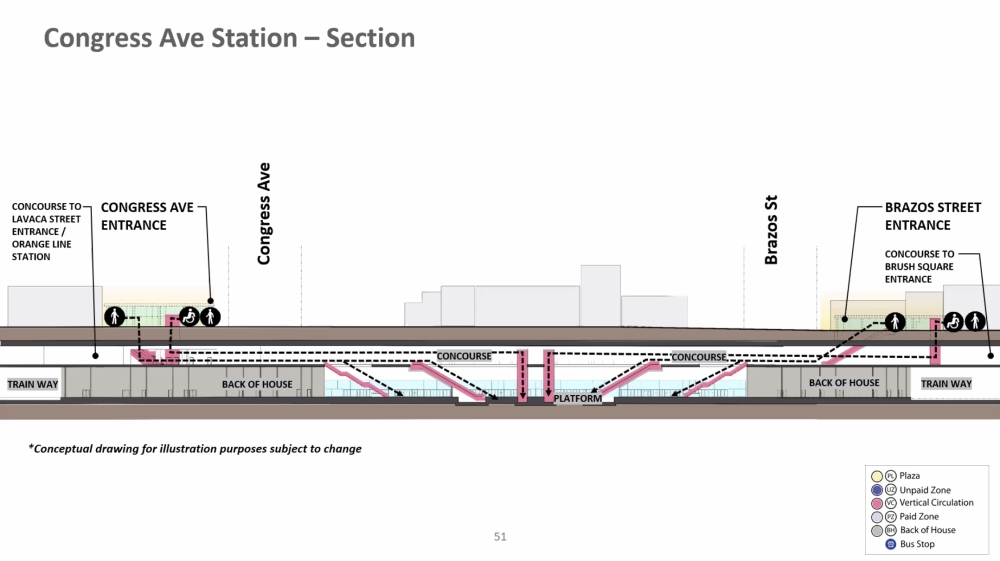
Rainey/MACC Station
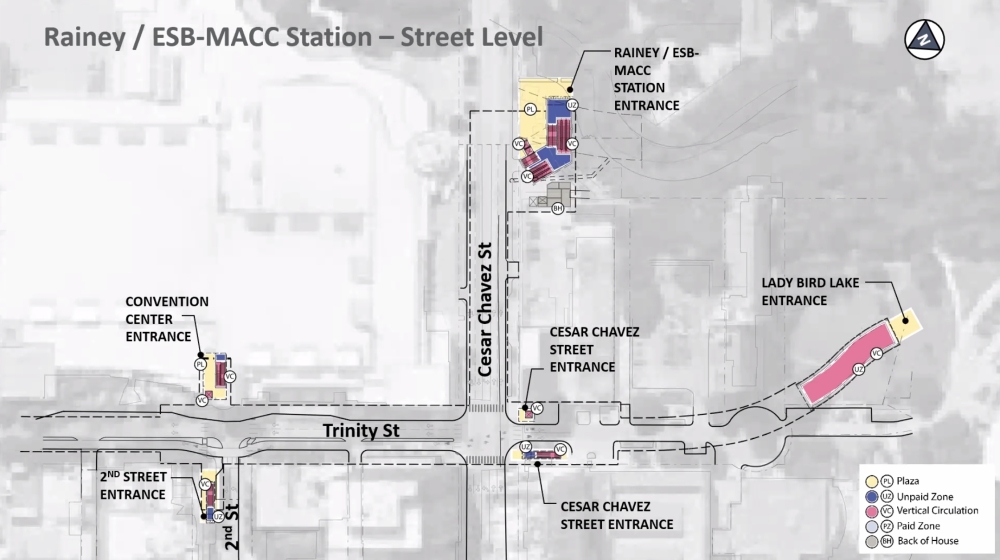
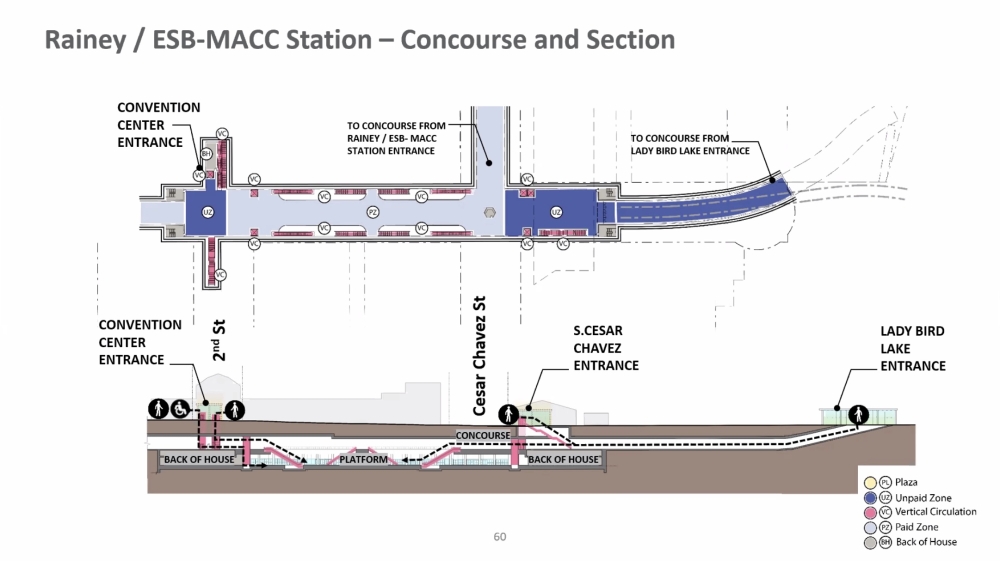
The southern end of the Rainey/MACC station will feature an extended ramp with both bike and pedestrian lanes leading out to the lakeshore trails. The ramp area could be designed to blend in with natural features outdoors and is necessary to accommodate the Blue Line's path beneath.

The Project Connect team is designing walkways for both the Congress Ave. and Rainey/MACC stations on the Blue Line that will connect with the Republic Square Station underground, forming a "downtown transit hub" for pedestrians. However, some pieces of the below-ground hub could be cut in future design phases for cost savings.
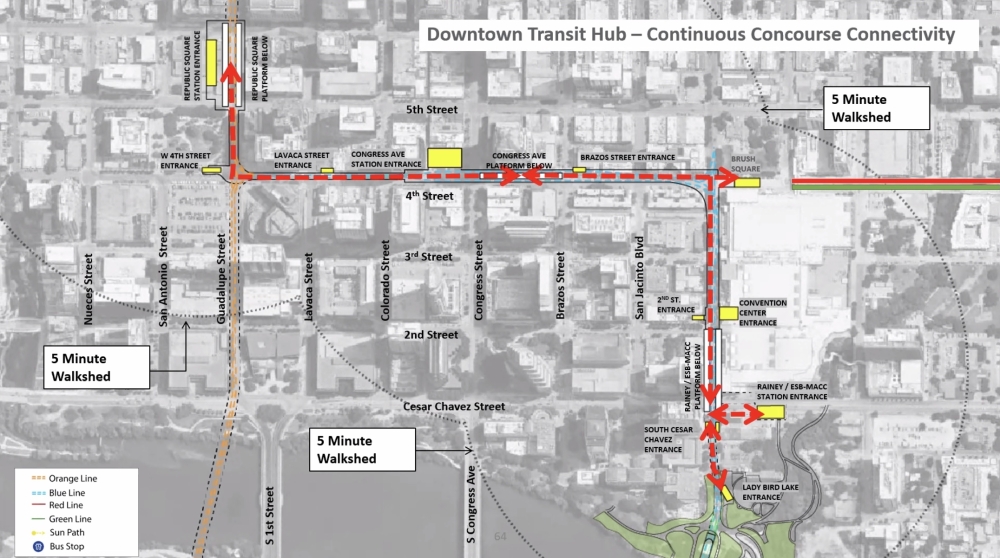
Rising costs
The subway is expected to be the most expensive and challenging piece of Project Connect's construction, especially given its rapidly-increasing price tag brought in part by current market and labor conditions.
During the June meeting, representatives with Capital Metro and the Austin Transit Partnership, entities guiding the transportation system's development, said there is still plenty of room for adjustments and cost savings as the design process moves forward. Peter Mullan, ATP's design and architecture chief, called Project Connect's cost the "elephant in the room," and said both internal and community discussions will inform whether portions of the system are rolled out at a later date or removed from current plans.
“We’re going to have to make some tough choices as a community. We’re going to have to look at project phasing, that’s going to be an important part of managing costs, but there may be other choices that we’re going to have to make," he said. "That’s going to be an ongoing and robust discussion with the community. We’re going to have to make these choices together and move this program forward together.”
Regardless of those decisions, Mullan said the tax rate approved by voters to fund Project Connect will not need to be increased.




